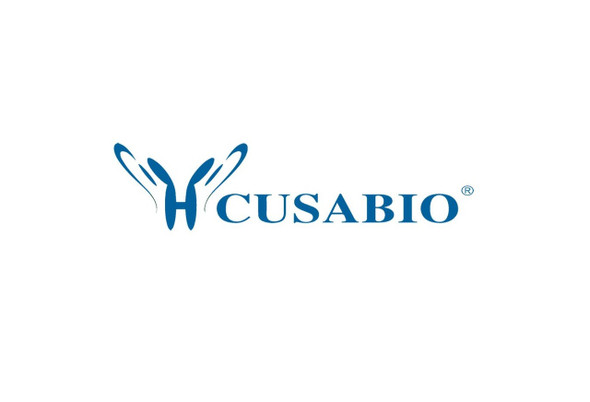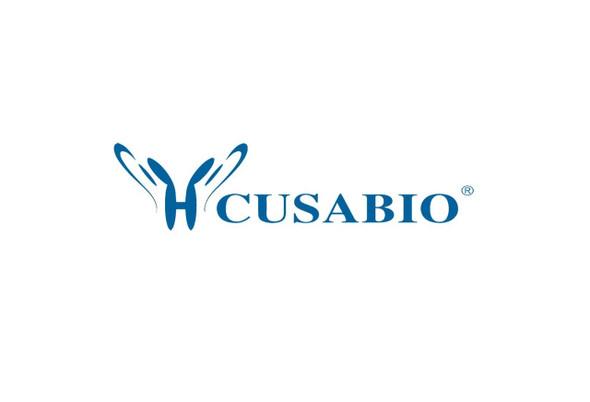Cusabio Active Proteins
Recombinant Human Hepatitis A virus cellular receptor 2 (HAVCR2), partial (Active) | CSB-AP005291HU
- SKU:
- CSB-AP005291HU
- Availability:
- 5 to 10 Working Days
Description
Recombinant Human Hepatitis A virus cellular receptor 2 (HAVCR2) ,partial (Active) | CSB-AP005291HU | Cusabio
Protein Description: Partial
Alternative Name (s) : Hepatitis A virus cellular receptor 2; T-cell immunoglobulin and mucin domain-containing protein 3; T-cell membrane protein 3; FLJ14428;KIM-3;Tim-3;TIM3;TIMD3
Gene Names: HAVCR2
Research Areas: Immunology
Species: Homo sapiens (Human)
Source: Mammalian cell
Tag Info: C-terminal 6xHis-Fc-tagged
Expression Region: 22-200aa
Sequence Info: SEVEYRAEVGQNAYLPCFYTPAAPGNLVPVCWGKGACPVFECGNVVLRTDERDVNYWTSRYWLNGDFRKGDVSLTIENVTLADSGIYCCRIQIPGIMNDEKFNLKLVIKPAKVTPAPTRQRDFTAAFPRMLTTRGHGPAETQTLGSLPDINLTQISTLANELRDSRLANDLRDSGATIR
Biological Activity: The ED50 as determined by its ability to bind Human Galectin-9 in functional ELISA is less than 20 ug/ml.
MW: 47.7 kDa
Purity: Greater than 90% as determined by SDS-PAGE.
Endotoxin: Less than 1.0 EU/µg as determined by LAL method.
Relevance: Hepatitis A virus cellular receptor 2(HAVCR2)is a single-pass type I membrane protein and it contains 1 Ig-like V-type (immunoglobulin-like) domain. The protein belongs to the immunoglobulin superfamily, and TIM family of proteins. The protein regulates macrophage activation. It inhibits T-helper type 1 lymphocyte (Th1) -mediated auto- and alloimmune responses and promotes immunological tolerance. It may be also involved in T-cell homing and it is receptor for LGALS9. CD4 (MIM 186940) -positive T helper lymphocytes can be divided into types 1 (Th1) and 2 (Th2) on the basis of their cytokine secretion patterns. Th1 cells and their associated cytokines are involved in cell-mediated immunity to intracellular pathogens and delayed-type hypersensitivity reactions, whereas Th2 cells are involved in the control of extracellular helminthic infections and the promotion of atopic and allergic diseases. The 2 types of cells also cross-regulate the functions of the other. TIM3 is a Th1-specific cell surface protein that regulates macrophage activation and enhances the severity of experimental autoimmune encephalomyelitis in mice.
PubMed ID:
Notes: Repeated freezing and thawing is not recommended. Store working aliquots at 4℃ for up to one week.
Function: Cell surface receptor implicated in modulating innate and adaptive immune responses. Generally accepted to have an inhibiting function. Reports on stimulating functions suggest that the activity may be influenced by the cellular context and/or the respective ligand
Involvement in disease: May be involved in T-cell exhaustion associated with chronic viral infections such as with human immunodeficiency virus (HIV) and hepatitic C virus (HCV) .
Subcellular Location: Membrane, Single-pass type I membrane protein, Cell junction
Protein Families: Immunoglobulin superfamily, TIM family
Tissue Specificity: Expressed in T-helper type 1 (Th1) lymphocytes. Expressed on regulatory T (Treg) cells after TCR stimulation. Expressed in dendritic cells and natural killer (NK) cells. Expressed in epithelial tissues. Expression is increased on CD4+ and CD8+ T-cells in chronic hepatitis C virus (HCV) infection. In progressive HIV-1 infection, expression is up-regulated on HIV-1-specific CD8 T-cells.
Paythway:
Form: Lyophilized powder
Buffer: Lyophilized from a 0.2 μm filtered 1xPBS, pH 7.4
Reconstitution: We recommend that this vial be briefly centrifuged prior to opening to bring the contents to the bottom. Please reconstitute protein in deionized sterile water to a concentration of 0.1-1.0 mg/mL.We recommend to add 5-50% of glycerol (final concentration) and aliquot for long-term storage at -20℃/-80℃. Our default final concentration of glycerol is 50%. Customers could use it as reference.
Uniprot ID: Q8TDQ0
Uniprot Entry Name:
HGNC Database Link: HGNC
UniGene Database Link: UniGene
KEGG Database Link: KEGG
STRING Database Link: STRING
OMIM Database Link: OMIM









